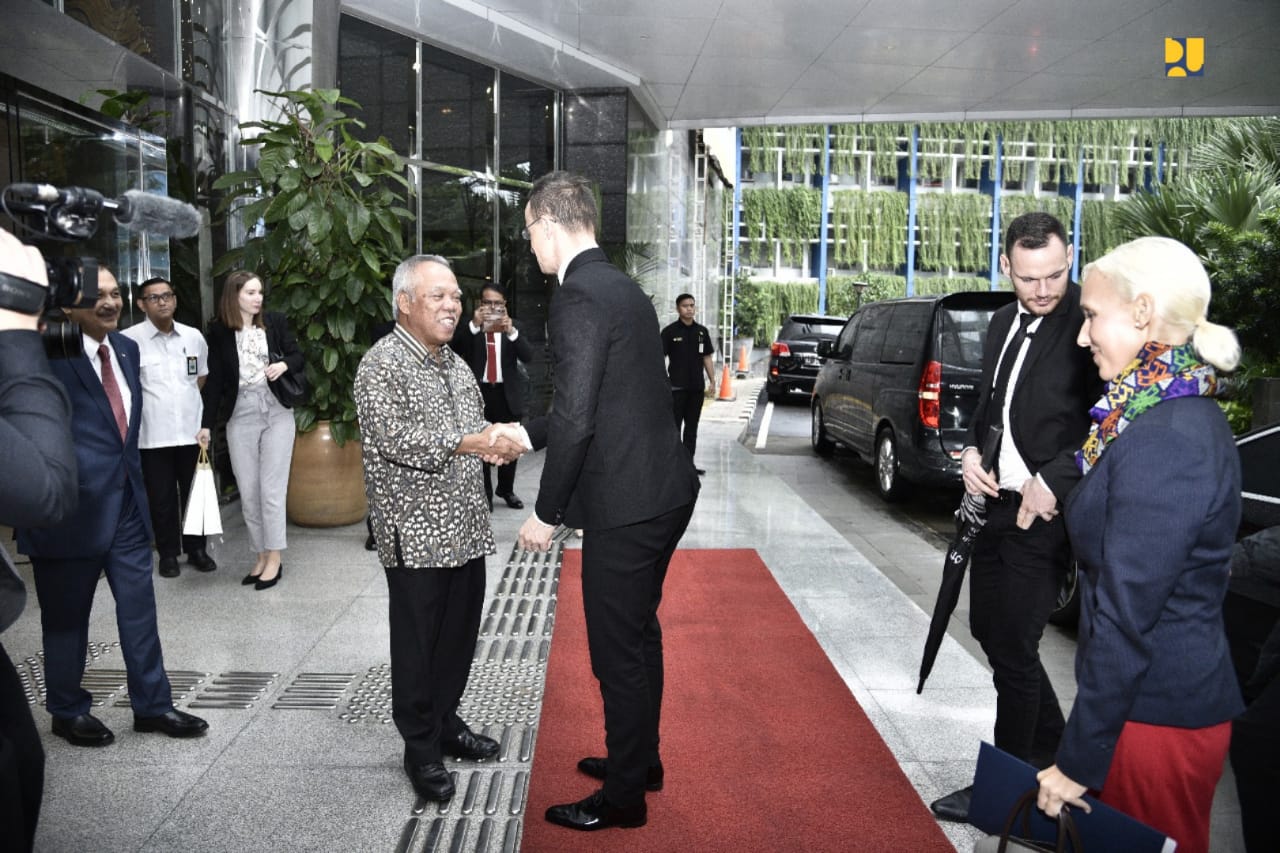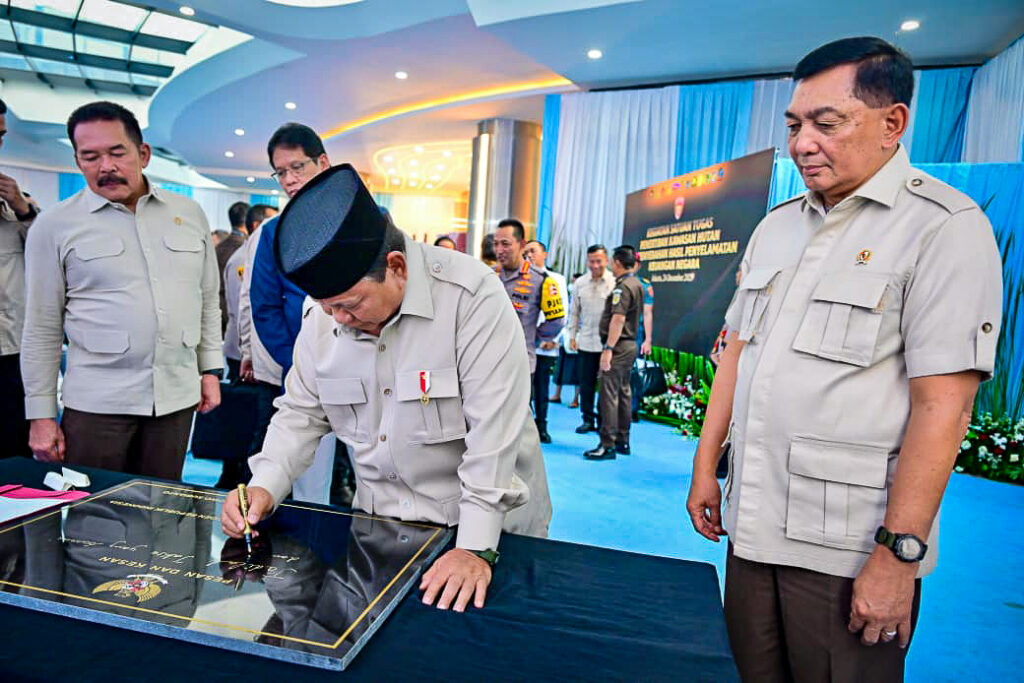Indonesia-Hungaria Seek to Improve Cooperation

Indonesian Minister of Public Works and Public Housing meets with Hungarian Minister of Foreign Affairs and Trade in Jakarta, Thursday (23/1). Photo by: The Ministry of Public Works and Public Housing.
Indonesian Minister of Public Works and Public Housing Basuki Hadimuljono and Minister of National Development Planning/Head of the National Development Planning Agency (Bappenas) Suharso Monoarfa received a visit from Hungarian Minister of Foreign Affairs and Trade Peter Szijjarto and Hungarian Ambassador to Indonesia Judit Nemeth Pach at the Ministry of Public Works and Public Housing, Jakarta, Thursday (23/1).
Minister Basuki Hadimuljono said that the meeting aimed to discuss further measures for investment cooperation in several infrastructure developments in Indonesia. The meeting covered the plan for continuation of cooperation in the construction of the District Capital Water Supply System (SPAM-IKK) and Hungary’s support in technology of Multi Lane Free Flow (MLFF) at the Toll Gate.
“For the first phase of the SPAM-IKK development cooperation, 100% of the construction has been completed in 36 District Capital. The Hungarian Government has offered to continue the cooperation in the field of Drinking Water and the Bappenas will calculate everything we need in the program. Clean water is one of our priorities in the next five years,” Basuki said.
The implementation of the first phase of the SPAM-IKK development cooperation in 36 sub-district capitals started in 2017 with a budget of US$36.444 million. The program has been completed on 31 December, 2019 with 100% of construction and financial progress. The scope of cooperation in the construction of SPAM IKK includes construction of the intake building with a raw water pump capacity of 22-44 liters per second, Water Treatment Plant (WTP), reservoir with capacity of 300-600 m3 and distribution pump.
Basuki went on to say that Hungarian Government has also offered to provide Technology of Multi Lane Free Flow (MLFF) at the Toll Gate. The Hungarian Government, he added, is preparing documents for the auction process. “Even though the Hungarian Government is the initiator of the technology, they must still follow the auction process. If there are other parties offering the same technology at a lower price, then the Hungary has a right to match,” the Minister said.
Basuki further said that the auction process for the implementation of the MLFF will begin in April 2020 and the announcement of the winner will be announced by the end of 2020. The Ministry of Public Works and Public Housing has received the project initiative from a Hungarian company, Roatex Ltd. Zrt which has been approved as a project initiator since 31 October 2019. Currently Roatex Ltd. Zrt is completing the Feasibility Study and preparing the Business Entity Document for MLFF technology before submitting the document no later than 31 January 2020.
In the meantime, Minister of National Development Planning/Head of the National Development Planning Agency (Bappenas) Suharso Monoarfa said that based on the evaluation of the first phase of the SPAM-IKK development cooperation, the agreement on the use of local content (TKDN) should be increased from 50% to 75%. “We have just said that the use of local content in next cooperation will increase with the same financial structure,” Suharso Monoarfa said.
On that occasion, Hungarian Minister of Foreign Affairs and Trade Peter Szijjarto stated that to develop the MLFF System at the Toll Gate requires an estimated cost of around US$90 million. “But it depends on the auction process,” Szijjarto said.
In the meantime, Director of Policy Formulation and Evaluation of the Ministry of Public Works and Public Housing Hery TZ said that the Hungarian-based company has offered Global Navigation Satellite System (GNSS) technology. “The existing RFID (Radio Frequency Identification) technology requires a reader in every place, but the satellite technology does not need the reader in every place, so it can be less expensive,” Hery said.
The GNSS is a payment system that uses tools that are installed in cars and is read via satellite. The use of GNSS is widely applied in Eastern European countries including Hungary.
Hery said that the application of the MLFF at toll gate will be implemented gradually, and the RFID System will be applied in transition period. “For MLFF technology, all vehicles must be registered, so that the RFID System will be used to register (the vehicles). After 100% (of vehicles) are registered, we will move to GNSS,” he said. (Ministry of Public Works and Public Housing/ EN)
Translated by: Ridwan Ibadurrohman
Reviewed by: Yuyu Mulyani








